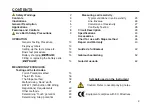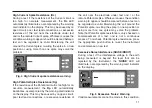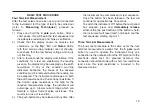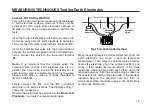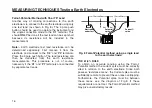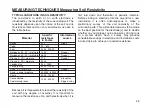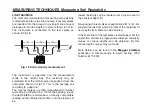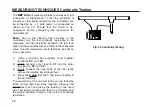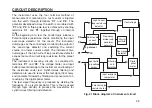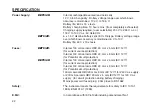
17
Fig 9. Resistance areas associated with an earth
electrode and current spike.
Theoretically, both the Current and Potential spikes
should be at an infinite distance from the earth
electrode. However, by graphical considerations and
by actual test it can be demonstrated that:-
The ‘true’ resistance of the earth electrode is equal to
the measured value of resistance when the Potential
spike is positioned 61,8% of the distance between the
earth electrode and the Current spike, away from the
earth electrode.
This is the 61,8% Rule and strictly applies only when
the earth electrode and Current and Potential spikes lie
in a straight line, when the soil is homogeneous and
when the earth electrode has a small resistance area
that can be approximated by a hemisphere. Bearing
these limitations in mind this method can be used, with
care, on small earth electrode systems consisting of a
single rod or plate etc. and on medium systems with
several rods. The diagram of Fig. 10 shows the
connections for the 61,8% Rule.
Fig.10 The 61,8% Rule method.
For most purposes the Current spike should be 30
metres to 50 metres from the centre of the earth
electrode under test. The Potential spike should be
inserted in the ground 61,8% of this distance, between
and in a straight line with, the Current spike and the
earth electrode. The distance is measured from the
earth electrode. If the earth electrode system is of
medium size containing several rods, then these
distances must be increased. The following table gives
a range of distances that agree with the rule. In the first
column ‘Maximum dimension’ is the maximum
distance across the earth electrode system to be
measured.
EP
C
Auxiliary
Current
Electrode
Auxiliary
Potential
Electrode
Electrode
Under Test
Resistance Areas
(Not Overlapping)
Electrode
under test
Potential
spike
Current
spike
k
C1
P2
C2
ES
H
4 POLE
3 POLE
MEASURE R
E
P1
ES
MEGGER
MEGGER
®
DET5/4D
DET5/4D
EARTH
EARTH
TESTER
TESTER
61,8% of EC
38,2% of EC
Содержание DET5/4D
Страница 41: ...41...

